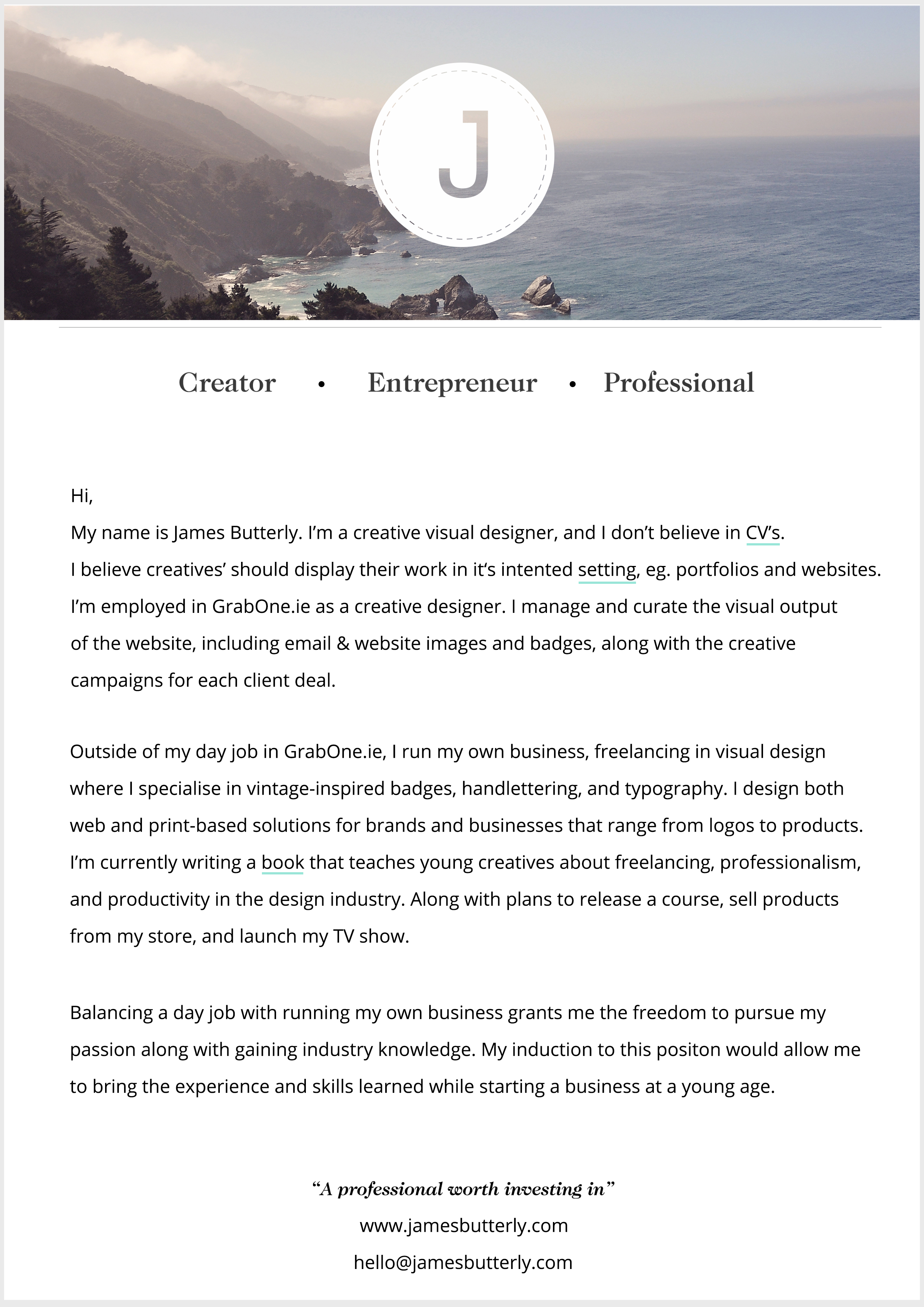
I have written about how CV’s don’t belong in a creative realm before in my series, ‘productivity and professionalism in the creative industry’. Post #44, titled;
‘Why You Should Delete Your CV’.
This may seem against the grain, as for many industries, the CV is the main entry point on which your experience and skills are judged. But judged on paper, out of its intended environment. Creativity maintains qualities and experiences that cannot be captured on paper if not originally intended to be there, out of context and without explanation of motives and emotions.
You cannot quantify or measure, creativity, experience, or professionalism. You either, actively are them, practicing to become them, or you’re not.
Your designs/websites/apps work best when thy are surrounded by contextual examples of your work and profession, ie. In it’s working environment. Being consumed by users, in the real world, where it was originally intended. If your work is predominantly digital, as is a lot of creatives’ work in a digital age, then this adds to the importance of having a strong virtual presence and making our website your home.
For creatives, your website acts as your CV. You have invested time and money into building it, carefully managing and curating and organising all that’s on it. This is the content you are passionate about. This is what you have built when you are not in a day job, for many creatives this is their 2nd job, their own personal business. You may have a shop, freelance for clients, run courses all from your website, bringing in residual income outside of your day job.
This is what you love to do, this is your passion. Show the recruiter this, what you have built-in your spare time. It will ultimately be something that you want to transition from at some stage in the future when you are ready to quit your day job and pursue your passion full-time. Let them know this, be as transparent with people about your business.
The content that establishes your track record and demonstrates your expertise and professionalism in your work is case studies and writing. Show the value you are providing with your content. Allow it to establish yourself as an expert in the field.
It’s about presenting your our work in the best possible way to the recruiter, in order to demonstrate that you have the experience, skills and values that they are seeking.
I believe a carefully crafted cover letter to the recruiter/employer is just as effective as the tradition CV. There are a number of ways to create a the perfect cover letter for you. Everybody has a different situation that they are in, but there are some general tips when creating cover letters that apply to everyone.
Below is an example of my personal cover letter, and 6 tips on creating a cover letter that will get you noticed;

- Don’t address anyone.
Introduce yourself in the lead paragraph. This part is key to the reader as to discern whether or not to continue. Give your name. Open with your values, what you stand for. State it, in a ‘matter-of-fact’ form. You need to be confident about your work. - Use 3 paragraphs.
The opening paragraph introducing yourself. The second paragraph should detail what you do externally, your goals. The closing paragraph should explain why you think you are the right person for the role and the problems you can solve for them. - Be Concise.
Each sentence should add value to the cover letter. Make sure your grammar is correct. Avoid lengthy explanations and spelling mistakes, there should be no ‘why’, as to why you go what you do, it’s not a letter to a family member detailing everything you are doing. Keep it concise, each sentence should be considered a bullet point when writing. - Link back to your work.
Using a PDF format allows you to add value in the form of links. Use links in the cover letter to give context to your values, experiences, and your goals. Seeing your work in its original form and environment is crucial. Never use more than 3 links in your cover letter. It’s intended to be short and snappy, if they recruiter is clicking back and forth on 10 different links to different sites and formats, it can get messy and more than likely they will stop reading there. - Branding.
Presentation is important. The cover letter should display your branding, logo, typefaces that you associate to your brand. The same style someone would see on your website. Keep it cohesive. This way you instill a strong sense of brand awareness. You establish that your brand is important to you and that you know what you are doing. - Provide contact information.
This may sound obvious, but don’t forget to provide the contact details of how you can be contacted, privately, in the easiest way.
This controversial approach to job-seeking, is a little left-field, and out of the ordinary. But your goal is to make an impression on the reader, quickly and precisely. You’re in control of the content and information that describes you and your values. The challenge is to display your professionalism, expertise and skills using around 100 words.

